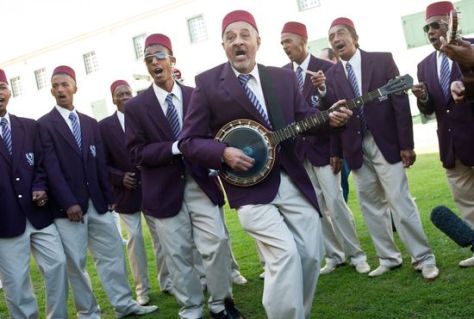Traditions among Cape Town communities are often passed-on from one generation to another, as parents teach their children as their parents did in the past.
The Malay’s not only brought their culture, cuisine, spices and expertise with them they also brought along their music, merging Malay and the Cape(Dutch) way of life through their music.

One such tradition is the passing on of the “liedtjies” sung amongst the Cape Malay communities. Ghoemmaliedjies, a Moppie, Wedding songs or a Nederlandslied are still sung at Cape Malay family get-togethers and events.
These songs can also be heard at the Cape Malay Choir Board Choral Competition held annually in Cape Town where the various Cape Malay Choirs strut their stuff on stage.
The “liedtjies” tells stories of characters (Rosa), events (Daar kom die Alabama), a funny story (Oom Jackal), Die Beren (a Dutch folk song) are but a few examples. Over the years songs have been adapted from top hits, daily events and even personal experiences, keeping alive this this rich tradition of song among the Cape Malay Community.
Perfect pitch and harmonizing are traditional characteristics of the Cape Malay Choirs with the Comic song that attract the most attention as the soloist performs to highlight every word with antics to draw the laughs from the crowd.

While some songs are sung without musical accompaniment, instruments like the banjo, guitar, violin, mandolin, a cello slung over one shoulder to provide the bass notes, a ghoemma drum and more recently a keyboard are used to accompany the singers. (A ghoemma drum is made by stretching a skin over one end of small carved out wooden barrel; this instrument is synonymous with the Malay Community.)
As the communities grew the Malay Choirs became more organised adopting names like; Red Roses, Carnations, Jolly Boys, Young Stars, Young Lions, Sweet Heartmays, All Blacks, The Continentals Male Choir, Ottomans Sporting Club Malay Choir, Young Ideas, Young Men Sporting Club and Young Cape Malay Stars to name a few.
The tradition parading through the streets of Cape Town from District Six to the Bo-Kaap on New Year’s Eve continues to this day providing a colourful spectacle for locals and tourists alike.
The Cape Malay Choir Board was formed in 1939 and recently celebrated its 76th anniversary; has grown in size and stature since its inception become the biggest multinational, multicultural organization of its kind with 38 Choirs in its fold.
The Cape Malay songs date back to the time the Malay’s arrived at Cape as slaves and settled in Bo-Kaap and later District Six.

A number of migrants who arrived at the Cape from all over the world in the early days also lived in these less affluent areas and they joined in the celebration of song making for an interesting cultural mix.
Although most members of Cape Malay descent the choirs also have members of non-Malay decent in their ranks, in fact Cape Town’s world-renowned tenor James Bhemgee is a member of a Cape Malay Choir.
The influence of the Cape Malay ‘liedjies” or Ghoemma has made its way into the modern genres of music via artists like Abdullah Ibrahim, Taliep Petersen, David Kramer, Zane Adams, Mac Mackenzie, Hilton Schilder and more recently Alistair Izobell, Nur Abrahams, Kyle Shepherd, Jonathan Rubain, Emo and Loukmaan Adams and to name a few.
In 2014 David Kramer took the Young Cape Malay Stars with him to perform at the famous Carnegie Hall, and they did so with much aplomb, receiving a standing ovation for their rendition of Cape Malay “liedjies”.
